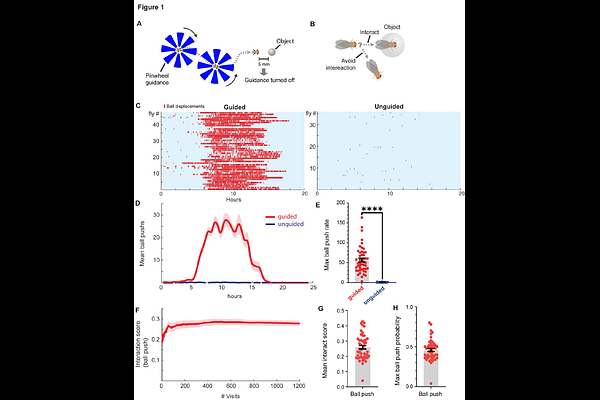Drosophila learn about properties of objects through physical interaction

Drosophila learn about properties of objects through physical interaction
Iwasaki, K.; Kawano, S.; Cassod, A.; Neuhauser, C.; Rayshubskiy, A.
AbstractAnimals interact with unfamiliar objects to learn about their properties and guide future behavior, but the underlying neurobiological mechanism is not well understood. Here, we developed a behavioral paradigm in which freely walking Drosophila melanogaster are repeatedly guided to spherical objects using a visual cue. Flies exhibited diverse and structured object interaction motifs, including \'ball pulling\', and \'ball walking\', that evolved over time. Notably, flies developed a strong preference for immobile over mobile objects, despite their near identical appearance, suggesting they learn about object stability through physical interaction. This preference was impaired by silencing specific h{Delta} neurons in the fan-shaped body, a circuit known for spatial navigation through vector computations. h{Delta} neurons also modulated object interaction motifs and fidelity of following visual guidance cues, pointing to a role in balancing goal-directed and exploratory behaviors. These findings establish Drosophila as a model for investigating how internal representations and multimodal feedback contribute to adaptive object interaction.